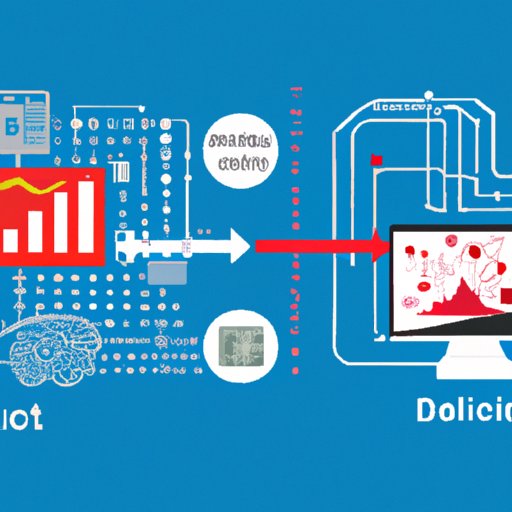Introduction
Data science is a rapidly growing field that combines elements of statistics, computer science, and mathematics to extract meaningful insights from large datasets. In recent years, data science has been increasingly applied to various industries, including healthcare, with the goal of improving outcomes, reducing costs, and enhancing patient experiences. In this article, we will explore how data science can be used in healthcare and the potential benefits and challenges associated with its implementation.

Leveraging Machine Learning to Improve Diagnosis Accuracy
Machine learning is a subset of data science that involves using algorithms to identify patterns in data and make predictions. In healthcare, machine learning can be used to improve diagnosis accuracy by leveraging medical images, such as CT scans or X-rays, to detect diseases or conditions. By training algorithms on large datasets of medical images, clinicians can more accurately and quickly diagnose patients, leading to better patient outcomes.
Recent successes in leveraging machine learning in healthcare include Google DeepMind’s AI system, which can detect breast cancer more accurately than human radiologists, and IBM Watson for Oncology, which uses natural language processing (NLP) to provide evidence-based treatment recommendations for cancer patients.
Utilizing Data Analytics to Improve Clinical Decision-Making
Data analytics is another subset of data science that involves collecting and analyzing data to gain insights and inform decisions. In healthcare, data analytics can be used to improve clinical decision-making by providing clinicians with actionable insights that can help them make more informed decisions. For example, data analytics can be used to analyze patient records to identify gaps in care and develop targeted interventions to improve patient outcomes.
Current applications of data analytics in healthcare include the use of electronic health records (EHRs) to improve quality of care and reduce medical errors, as well as the use of predictive analytics to anticipate patient needs and proactively intervene to prevent adverse events.
Applying Predictive Analytics to Personalize Treatments
Predictive analytics is a type of data analytics that focuses on predicting future outcomes based on past data. In healthcare, predictive analytics can be used to personalize treatments by leveraging patient data to identify individual risk factors and recommend tailored treatments. For example, predictive analytics can be used to identify patients at risk of developing certain diseases and recommend lifestyle changes or medications to reduce the risk.
Successful implementations of predictive analytics in healthcare include Geisinger Health System’s “MyCode” program, which uses genetic testing to identify patients at high risk for certain diseases and suggest preventive measures, and the University of Pittsburgh Medical Center’s “Personalized Medicine Program,” which uses machine learning to predict patient responses to different treatments.

Enhancing Patient Care Through Automation
Automation is the process of using technology to automate tasks that would otherwise be performed manually. In healthcare, automation can be used to enhance patient care by streamlining processes, reducing costs, and improving efficiency. For example, automation can be used to automate administrative tasks such as appointment scheduling and billing, as well as to monitor patient vitals and alert clinicians when abnormalities are detected.
Current applications of automation in healthcare include the use of robotic surgery to perform minimally invasive procedures, as well as the use of chatbots to provide personalized health advice to patients.

Harnessing Big Data to Develop New Therapies
Big data is a term used to describe large datasets that contain a variety of information, such as patient medical records, genomic data, and environmental data. In healthcare, big data can be used to develop new therapies by leveraging the data to identify patterns and uncover insights that can be used to inform drug development and treatment strategies. For example, big data can be used to identify genetic markers associated with certain diseases and develop targeted treatments.
Current technologies leveraging big data to create new treatments include IBM Watson for Drug Discovery, which uses artificial intelligence (AI) to analyze vast amounts of biomedical data to identify potential drug targets, and the National Cancer Institute’s Genomic Data Commons, which uses genomic data to identify new therapeutic targets for cancer.
Conclusion
Data science has the potential to revolutionize healthcare by improving diagnosis accuracy, enhancing clinical decision-making, personalizing treatments, automating patient care, and developing new therapies. However, there are also potential challenges associated with implementing data science in healthcare, such as privacy concerns, cost issues, and the need for data standardization. To fully realize the potential benefits of data science in healthcare, it is important to continue exploring and addressing these challenges.
(Note: Is this article not meeting your expectations? Do you have knowledge or insights to share? Unlock new opportunities and expand your reach by joining our authors team. Click Registration to join us and share your expertise with our readers.)
